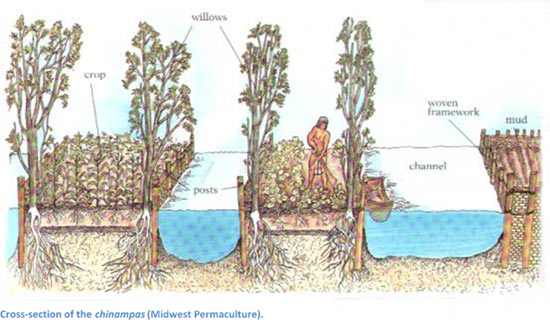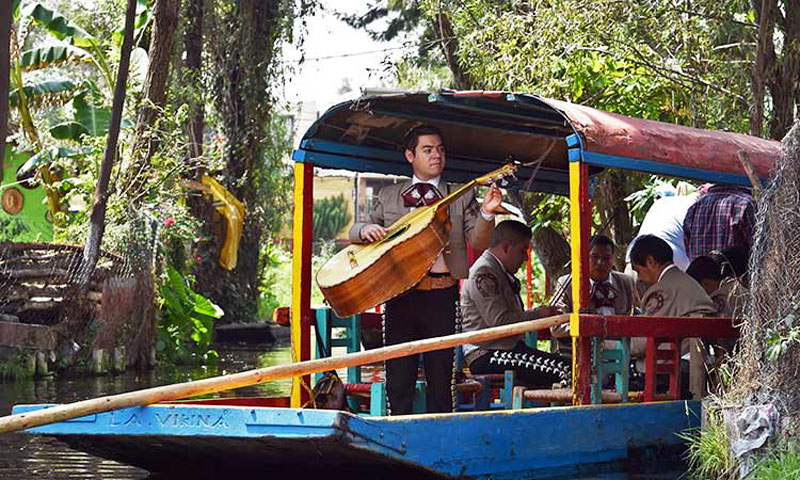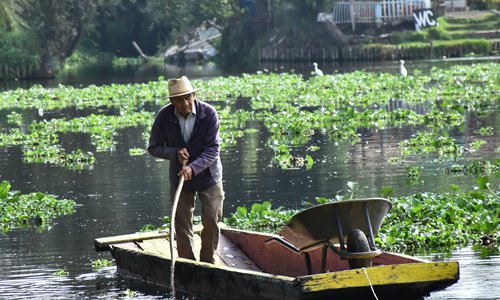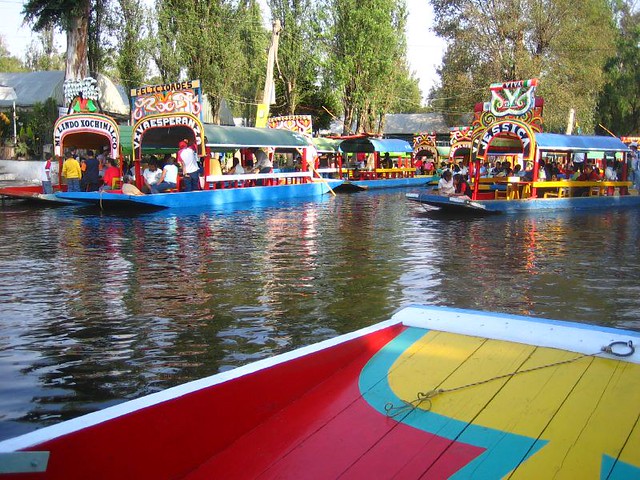Anthropology
Related: About this forumBolivia, before the Spanish invasion, had "floating gardens," too, like Mexico.
Prehispanic Raised Field Agriculture:
Applied Archaeology in the Bolivian Amazon

Prehispanic raised fields in the savannas of the Llanos
de Moxos of Bolivia. The elevated planting platforms
are 20 meters wide, 0.2-1 meter tall, and up to 600
meters long.
Until about 30 years ago, Western academic opinion agreed that the Amazon Basin could never have sustained large populations; due to the limitations of a tropical environment, the area could support only hunting and gathering and slash-and-burn agriculture. Subsequent archaeological research proved this opinion wrong. The savannas and forest of the Bolivian Amazon were, in fact, once densely populated by well-organized societies, and precolumbian farmers heavily modified the landscape. In the early 1960s, William Denevan, George Plafker, and Kenneth Lee uncovered evidence of massive earthworks in the savannas of the Llanos de Moxos (or Mojos), including raised fields, canals, causeways, reservoirs, dikes and mound settlements. A joint "applied archaeology" project involving the Inter-American Foundation, the Parroquia of San Ignacio, the Bolivian Institute of Archaeology, and the University of Pennsylvania Museum of Anthropology and Archaeology has developed an experimental program to put raised-field agriculture back into use.
Shallow floodwaters cover much of the low-lying lands in the Llanos de Moxos during part of the rainy season. The rest of the year, dry conditions prevail and water is scarce. The alternation between seasonal flooding and seasonal drought, combined with poor soil conditions and lack of drainage, make farming in these areas difficult. The ancient inhabitants of the area created an agricultural landscape to solve these problems and make the area highly productive. They constructed a system of raised fields, or large planting surfaces of earth elevated above the seasonally flooded savannas and wetlands. Experiments have shown that the raised fields improve soil conditions and provide localized drainage and the means for water management, nutrient production, and organic recycling.
Experiments in raised-field agriculture began in 1990 at the Biological Station of the Department of the Beni in Bolivia. Because of its success, the project expanded into indigenous communities of the region. During 1993, the communities of Bermeo and Villa Esperanza decided to collaborate. They donated land, and the Inter-American Foundation provided funds to pay community members a small daily wage to build and maintain the fields.
The raised fields have produced impressive harvests of manioc and maize. Community members carefully record data on each field to see whether these high levels can be sustainable over a long period of continuous cropping makes raised field farming a labor-efficient technology. Little maintenance is necessary to keep the fields in production. Many areas with similar conditions throughout lowland tropical Latin America could be farmed using raised-field technology. Highly productive raised-field farming could provide sustainable agricultural development for local communities and offer an alternative to cutting down the rainforest.
https://www.sas.upenn.edu/~cerickso/applied3.html
(Found this trying to see where the temporary Pres. of Bolivia came from, which is Beni, Bolivia.)
Judi Lynn
(162,385 posts)in their modern form in Mexico City, as they have continued right there since the Aztecs or even someone earlier built them in the first place. What an amazing idea, and one of the great visions of an earlier world:


~ ~ ~
XOCHIMILCO Mexico's Floating Gardens
XOCHIMILCO
When visiting Mexico City, there is an abundance of day trips to choose from when planning your activities. A fantastic destination to explore can be found just outside the city. This is where the historic canals of Xochimilco (so-chee-mil-co) are located. In Nahuatl, the language of the Aztecs, Xochimilco means "garden of flowers". Enjoyed by foreigners and nationals alike, this magical location dates back several centuries.
Miles of canals dot the landscape in Xochimilco, enchanting the senses with their natural beauty. Flat-bottomed boats called trajineras travel these waters, as they have for hundreds of years. Produce and flowers grow in abundance in this exotic atmosphere. What makes Xochimilco so fascinating is its embodiment of traditional Mexican culture. These canals and gardens represent a living example of an ingenious agricultural practice that was invented long ago.
The Xochimilca people settled in the Valley of Mexico between the eighth and tenth centuries. One of the key challenges for these early inhabitants were the vast amount of wetlands that the area possessed. Traditional farming methods were not conducive in this setting. To surmount the obstacles this water-filled environment presented, the Xochimilca came up with a creative solution.

Postcard View of Xochimilco from the '50s
Using available resources, these settlers built chinampas (floating gardens) on the surface waters of Lake Xochimilco. Using cane structures, mud was placed inside these containers and were anchored in position by trees lining the shore. Fertilizer was culled from the floor of the lake bed which was rich in aquatic mulch. Flowers, fruits and vegetables grew abundantly using this successful farming method.
The Xochimilca people who established these chinampas were ultimately conquered by the Aztecs, who in turn utilized these floating gardens to feed their growing empire. During its height, the chinampa system extended over 22,000 acres of wetlands and provided food for tens of thousands of people. The canals were built to navigate the chinampas and to provide a transportation corridor which brought produce to the Aztec Empire.
More:
http://www.mexonline.com/history-xochimilco.htm
~ ~ ~






So many more images:
https://tinyurl.com/uxzc9tk